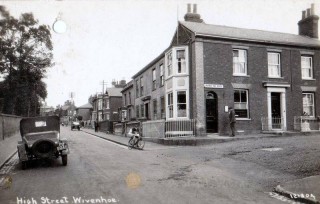Post Office and the Telegraph service
High Street Research Team
In 1918 telegrams were received and could be sent from the Post Office. Very few people had telephones in Wivenhoe, so telegrams were the quickest method to get a message sent.
Ella Ham worked as the telegraphist at the Post Office in 1911. This was a highly skilled job. She would have received training in how to type and read Morse Code and would have been well paid.
During WW1 telegraphists were trained to check messages to identify possible spies. At this time the job would have been particularly hard as the telegraphist would have been the first person to see the news of injury or worse, destined for a Wivenhoe family.
Delivering telegrams was a serious matter. Stanley Simons, aged 13, who lived in Alma Street, was the telegraph boy in 1911. His job was to speed as quickly as possible on his bike from the Post Office to deliver the paper telegram to the recipient.
During WW1 if the envelope had a special mark then this signified bad news. People must have dreaded the telegraph boy arriving.
Telegrams cost 6d (about 2p) for every nine words, and a penny for each extra word after that, so messages were short and unimportant words were left out.
Resources:







No Comments
Add a comment about this page